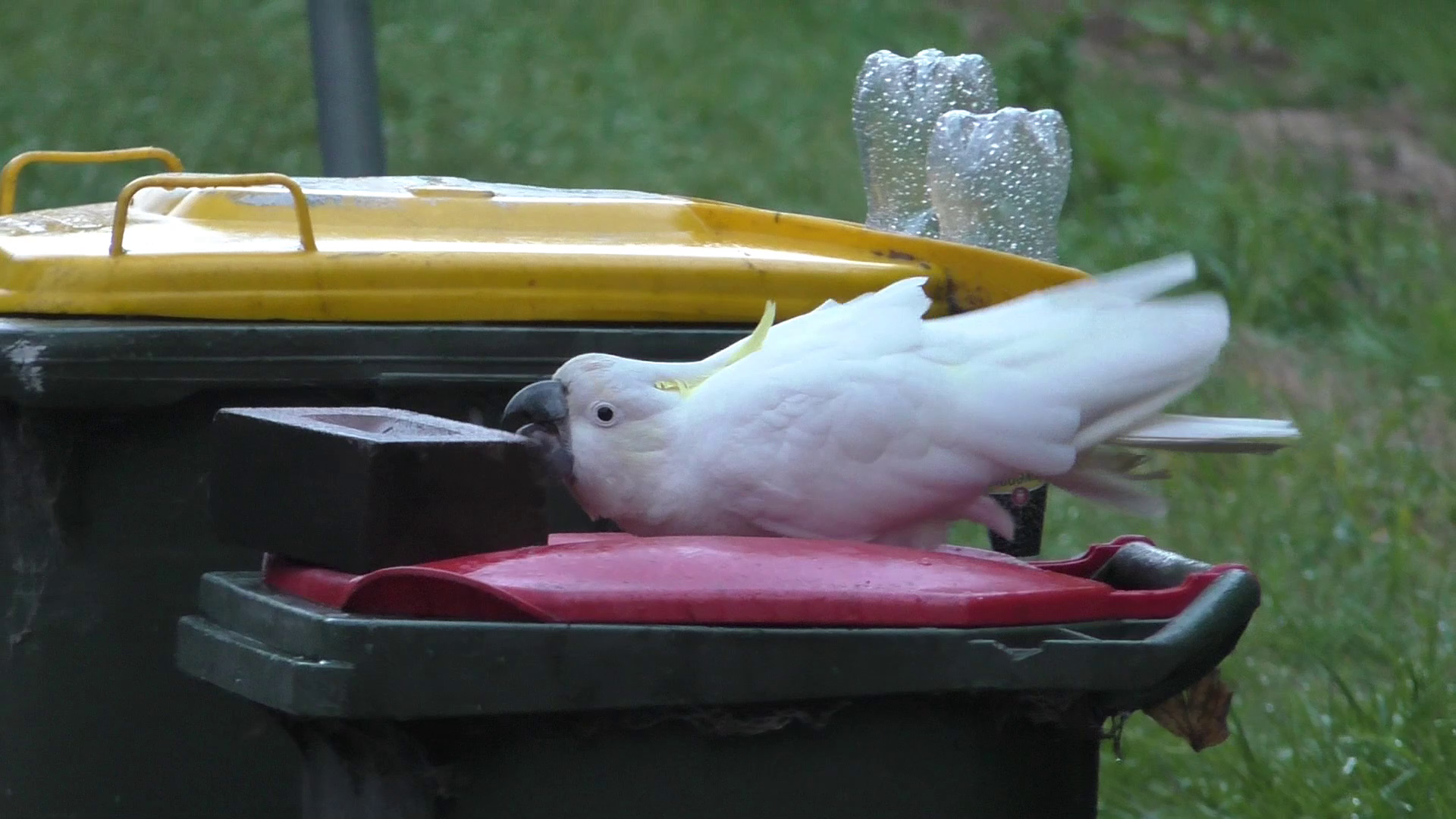Media release
From:
In Australia, cockatoos and humans are in an arms race over garbage access
Residents of southern Sydney, Australia have been in a long-term battle over garbage—humans want to throw it out, and cockatoos want to eat it. The sulphur-crested cockatoos that call the area home have a knack for getting into garbage bins, and people have been using inventive devices to keep them out. Researchers detail the techniques used by both people and parrots in a study publishing on September 12 in the journal Current Biology.
“When I first saw a video of the cockatoos opening the bins I thought it was such an interesting and unique behavior and I knew we needed to look into it,” says lead author Barbara Klump (@DrBarbaraKlump), a behavioral ecologist at the Max Planck Institute of Animal Behavior.
The cockatoos’ motivation is food waste. “They really like bread,” she says. “Once one gets a bin open all the cockatoos in the vicinity will come and try to get something nice to eat.”
The birds typically pry the bins open with their beaks and then maneuver themselves onto a small rim and flip the lid open. It’s a community affair. “We could actually show that this is a cultural trait,” says Klump. “The cockatoos learn the behavior from observing other cockatoos and within each group they sort of have their own special technique, so across a wide geographic range the techniques are more dissimilar.”
Human residents trying to keep the cockatoos out can’t simply secure the bin lids completely closed because the lids need to open when tipped by an automated arm on the garbage truck. A survey given by the researchers found that people put bricks and stones on their bin lids, strap water bottles to the top, rig ropes to prevent the lid from flipping, use sticks to block the hinges, and switch tactics once the cockatoos figure them out. “There are even commercially available cockatoo locks for bins,” says Klump.
“It's not just a social learning on the cockatoo side, but it's also social learning on the human side,” she says. “People come up with new protection methods on their own, but a lot of people actually learn it from their neighbors or people on their street, so they get their inspiration from someone else.”
Klump won’t say who she expects to win the race for control of the bins, but she and her colleagues plan to look at how the cockatoos’ behavior varies from season to season.
Klump expects we will see more of these kinds of human-wildlife interactions in the future. “As cities expand, we will have more interactions with wildlife,” she says. “I'm hoping that there will be a better understanding and more tolerance for the animals that we share our lives with.”



 Australia; International; NSW; ACT
Australia; International; NSW; ACT



